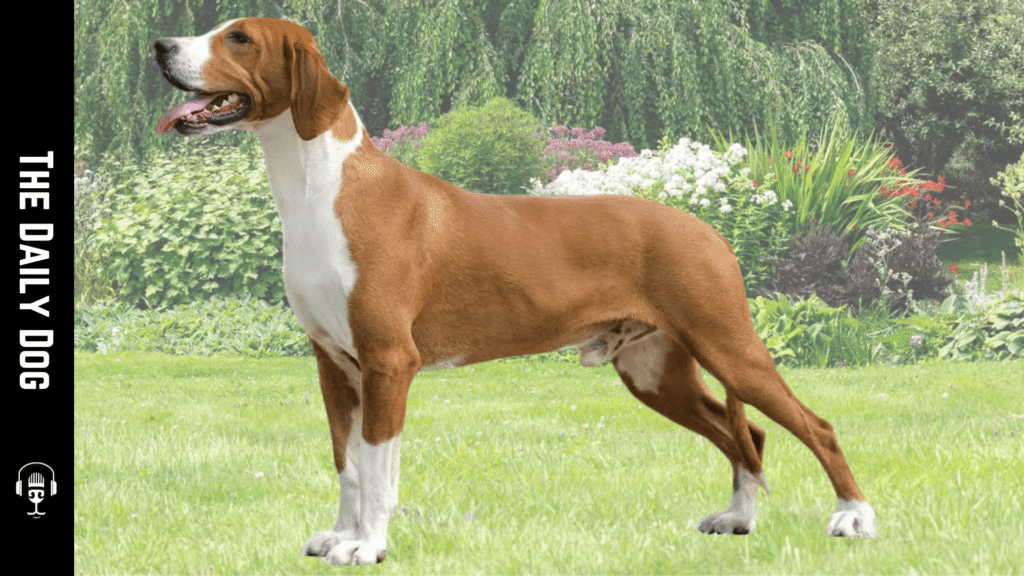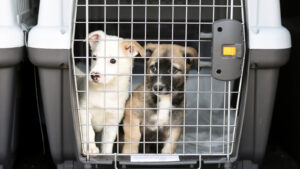The Posavac Hound stands out as a resilient and athletic companion with a storied lineage rooted in the Balkans. This breed, sometimes referred to as the Croatian Posavac or simply Posavac, embodies the hard-wired instincts of a hunter and the loyal temperament of a family dog. For households that prize endurance, independence, and a dog that thrives on purposeful work, the Posavac Hound offers a compelling partnership. Yet its strength of will and high energy demand a thoughtful approach to training, socialization, and daily activity. The result can be a devoted, capable, and remarkably versatile canine.
A lineage shaped by landscape and function
The Posavac Hound developed in the river valleys and forested regions along the Sava River and its tributaries, a landscape that rewards stamina, a fine nose, and a steady, methodical pace. Traditionally used to hunt game over long distances, this breed was bred to work in tandem with human handlers, maintaining focus across variable terrain and challenging weather. The Posavac’s makeup reflects a practical balance: a lean, muscular frame that can cover ground efficiently, a coat that protects against the elements, and a temperament that blends independence with trainable obedience when engaged by a capable owner.
Appearance and build
Physically, the Posavac Hound is a medium-to-large dog with a well-proportioned, athletic silhouette. The body communicates endurance and strength: a deep chest, a strong back, and well-muscled hindquarters that support sustained trotting and tracking. The coat is short-to-medium in length, typically a pale to warm tan or fawn with darker shading around the muzzle and ears, and often a mask-like facial pattern that is characteristic of many hounds. The ears usually hang close to the head, and the tail carries a gentle, purposeful bend, reflecting a dog accustomed to steady movement through a variety of environments. Overall, the breed presents a look that signals both capability in the field and an alert, attentive gaze that signals its readiness to engage with a handler.
Temperament and suitability for families
The Posavac Hound’s temperament is widely described as loyal, bold, and independent. These traits, when properly harnessed, translate into a dog that is confident in its abilities and reliable in the home with the right guidance. They tend to form strong bonds with their people and often show a calm, affectionate demeanor once routines are established. However, their hunting heritage also means a strong prey drive and a tendency toward alertness. They may become fixated on scents or distant sounds, so owners must invest in early socialization and consistent training that respects the dog’s need for mental engagement.
In family life, the Posavac Hound can be a steady companion for households that provide structure, exercise, and mental stimulation. They generally do well with children when interactions are supervised and the dog has had ample socialization from an early age. Prospective owners should be mindful of energy levels and the potential for stubborn moments. Training must be consistent yet positive, blending firmness with encouragement to keep engagement high. Because of their independence, Posavacs respond well to owners who establish themselves as calm, confident leaders and who use regular, rewarding training sessions.
Exercise, mental engagement, and daily rhythm
A Posavac Hound is not a dog to be left idle or confined for long periods. This breed’s instinctive need for physical exercise and mental challenge is substantial. Daily activity should include a mix of long walks, scent-driven exercises, and opportunities to work on problem-solving tasks. The dog’s scenting ability is a natural focal point for enrichment; let this be channeled through activities such as nose-work games, track-style exercises, or supervised outings in safe, stimulating environments. Regular, vigorous exercise helps prevent boredom-related behaviors and supports healthy weight management, joint care, and overall well-being.
The ideal daily rhythm for a Posavac Hound involves a balance of outdoor time and structured training. Morning activity can include a brisk walk or jog to burn excess energy, followed by a training session that reinforces obedience, impulse control, and recall in a distracting environment. Afternoon or early evening sessions can provide additional mental challenge, such as scent work or agility-inspired exercises that suit their temperament without overexertion. A well-exercised Posavac is more likely to settle calmly indoors, contributing to a harmonious home environment.
Training and socialization: building a cooperative partnership
Because of their independent streak, Posavac Hounds respond best to training approaches that emphasize patience, consistency, and positive reinforcement. Early and ongoing socialization is essential. Introduce the dog to a broad range of people, animals, environments, and situations to reduce overreactivity and to foster confidence across settings. Positive reinforcement methods, including rewards, praise, and play, champion engagement and build a trusting relationship with the handler.
Recall training is particularly important for this breed due to their scent-driven curiosity. Integrate short, frequent recall sessions into daily routines and practice in increasingly stimulating environments, such as parks or rural trails, where distractions are present but manageable. Boundaries and boundaries-based training help establish clear expectations, reducing the likelihood of wandering off in pursuit of an interesting scent.
Grooming, care, and health considerations
Posavac Hounds typically have a short-to-medium coat that is relatively easy to maintain with regular brushing. Brushing a few times per week helps remove loose hair, distribute skin oils, and reduce shedding around living spaces. Routine ear care is advisable to prevent infections, particularly in dogs with pendulous ears. Check ears weekly for wax buildup, redness, or odors, and clean gently using a vet-approved solution if needed. Nails should be trimmed regularly to prevent overgrowth and discomfort during walks or work.
Regarding health, the Posavac is generally robust, but like all breeds, it benefits from routine veterinary care, timely vaccinations, parasite prevention, and dental hygiene. Hip and elbow dysplasia are potential concerns in larger breeds, so responsible breeding, weight management, and appropriate exercise early in life contribute to long-term joint health. Routine wellness checks can help identify any hereditary issues, allowing for early intervention if needed. A healthy Posavac displays a balanced gait and maintains stamina during extended activities.
Living conditions and suitability for different households
The Posavac Hound adapts best to environments where it has a clear purpose and civil, steady routines. They thrive in homes with access to secure outdoor space for exploration and exercise, though they can adapt to apartment living if the owners are highly committed to providing sufficient daily activity and mental enrichment. Because of their scent-driven nature, owners should consider secure fencing and attention to boundaries to prevent them from following an intriguing trail away from home.
This breed often excels in households that can dedicate time to training and socialization, ideally with an owner who enjoys an active lifestyle. Families who appreciate a loyal, involved dog that will happily accompany long hikes, trail runs, or hunting-related activities will find the Posavac Hound a natural fit. For first-time dog owners, a Posavac requires a plan that includes consistent guidance, patience, and a willingness to engage in structured training programs or professional instruction to establish a strong, positive foundation.
Nutrition and weight management
A well-balanced diet supports the Posavac Hound’s energy needs and overall health. The exact caloric intake depends on factors such as age, weight, activity level, and metabolism. Regular feeding schedules, portion control, and high-quality dog foods appropriate to life stage help maintain a healthy weight. Monitoring weight and body condition is important to prevent obesity, which can stress joints and diminish performance. Fresh water should always be available, especially after long periods of exercise or tracking work.
Choosing a Posavac Hound: what to look for
If you are considering bringing a Posavac Hound into your family, you’ll want to work with reputable breeders or rescue organizations that emphasize health testing and responsible breeding practices. Look for a breeder that provides health clearances for the breed’s common concerns and demonstrates transparent care for puppies and socialized adults. A well-socialized Posavac should be comfortable with different people and environments, showing curiosity and confidence rather than fear or aggression.
Adopting from a rescue or breed-specific rescue network is another admirable option. These organizations often have dogs with varied temperaments and backgrounds, and they can help ensure that potential adopters match a dog’s energy level, exercise needs, and personality with the home environment.
Partnership with professionals can make a substantial difference in the Posavac Hound’s well-being. A veterinarian who understands breed-specific considerations can offer tailored guidance on nutrition, vaccination schedules, dental care, and preventive health strategies. Trainers experienced with scent hounds can help tailor a training plan that respects the breed’s independence while building reliability and enthusiasm for learning.
The Posavac Hound in the modern home
Today’s Posavac Hound remains a capable, spirited, and loyal companion for families that can meet its demands for exercise, mental stimulation, and consistent leadership. The breed’s legacy as a tracking and hunting partner translates well into an active household with a desire for outdoor adventures, whether that means long weekend hikes, field trials, or structured scent-work activities. The dog’s natural drive, when aligned with attentive handling, can yield a remarkably cooperative partner that is both self-assured and responsive to training.
As with any breed, potential owners should be honest about lifestyle compatibility. A Posavac Hound requires engagement, space to move, and a daily rhythm that includes physical exertion and cognitive challenges. For the right family, the Posavac Hound becomes more than a pet; it is a trusted companion capable of sharing many years of companionship, affection, and mutual respect.
Conclusion: a breed defined by strength, heart, and purpose
The Posavac Hound embodies a blend of Balkan resilience, canine intelligence, and unwavering loyalty. It is a dog that relishes the act of working alongside a handler, navigating terrain, following scents, and participating in structured activities that honor its hunting heritage. When matched with a family that can provide regular exercise, socialization, and positive training, the Posavac Hound offers a rewarding and enduring partnership. For the right owner, this breed delivers not only athletic prowess and a sharp nose but also a steadfast presence and a heart that remains deeply connected to those it loves.
If you’re seeking a dog with a storied background, formidable energy, and a temperament that is both confident and affectionate, the Posavac Hound deserves serious consideration. It is a breed that asks for commitment, but in return, it provides loyalty, companionship, and a life enriched by shared exploration and purposeful work. The Posavac Hound is more than a hound; it is a dedicated partner for an active, engaged household—a dog whose strength of character and devotion makes every day an opportunity to build a meaningful bond.










